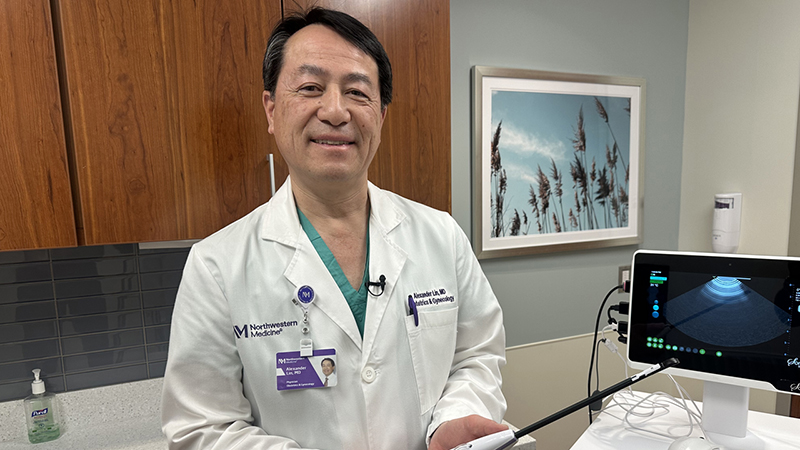Cooling Caps Freeze Hair Loss During Chemo
Preserving Hair and Identity
Updated September 2022
Time froze when Lake Zurich, Illinois, resident Lisa Moses waited for the results of her breast biopsy.
“Your world stops when you hear the news,” says Lisa. “At age 44, I was diagnosed with breast cancer.”
But Lisa knew she had to get her world moving again. “I wanted to engage myself and be an active participant in my treatment, so I went to Northwestern Medicine,” she says. Before her lumpectomy, Lisa had to start chemotherapy.
Before she started chemo, Lisa remembered something she saw on social media: Her friend who was undergoing chemo for breast cancer wore a cooling cap to preserve her hair.
“I was intrigued and saw that she had success on it, so I went online to see where I could use one during my treatment,” says Lisa. “There were only five places in Illinois, and Lake Forest Hospital was one of them. I couldn’t believe the coincidence and convenience.”
Hair loss is one of the most vexing side effects of chemotherapy.— Valerie M. Nelson, MD
Cooling Caps for Chemotherapy
Cooling caps for chemotherapy are worn on the scalp and cooled with water until they reach a temperature just above freezing (around 37 degrees F). Patients wear the rubberized caps before, during and after chemotherapy.
“Cooling caps work by constricting the blood vessels in the scalp to reduce the amount of chemo that can get to the hair follicles, preventing hair loss,” says Valerie M. Nelson, MD, medical oncologist and director of clinical research at Northwestern Medicine Lake Forest Hospital. “At Lake Forest Hospital, we have extremely high satisfaction rates among patients who used cooling caps during chemo.”
Treatment with cooling caps is considered successful when patients keep 50% of their hair or more. That’s happened for nearly 70% of patients who’ve used the caps at Lake Forest Hospital since they arrived after being approved by the Food and Drug Administration (FDA) in 2017.
Lisa kept about half of her hair, and it fell out uniformly, which allowed her to style it in a way that hid the hair loss.
What advice does Lisa have for patients considering using a cooling cap? “It’s a process, and you have to be dedicated,” says Lisa. “Don’t worry, you get used to the cold quickly.”
The time patients spend wearing the cooling cap varies based on their chemotherapy per the discretion of their medical oncologist.
Taking Control of Cancer
Hair loss is a telling sign of chemotherapy. The cooling cap treatment empowers patients to choose who they tell about their cancer diagnosis and from who they conceal it. And preserving more hair also allows hair to grow back more rapidly after treatment.
“Cancer and chemo take your energy, your social life, and rob you of your identity,” says Lisa. “By keeping much of my hair, I was able to hold onto my identity and control who I wanted to tell about my diagnosis.”
“Hair loss is one of the most vexing side effects of chemotherapy,” adds Dr. Nelson. “Having some control over your physical appearance during cancer helps with self-worth and gives patients control back of a situation in which they have very little of it.”
When Lisa was in remission, she already had a jumpstart on her hair regrowth. She says that she’d tell anyone undergoing chemotherapy to consider cooling cap therapy as well.
“My journey would’ve been emotionally harder if I had to see my reflection in the mirror as a reminder of my cancer,” says Lisa. “I’m forever grateful that I was able to see myself.”






